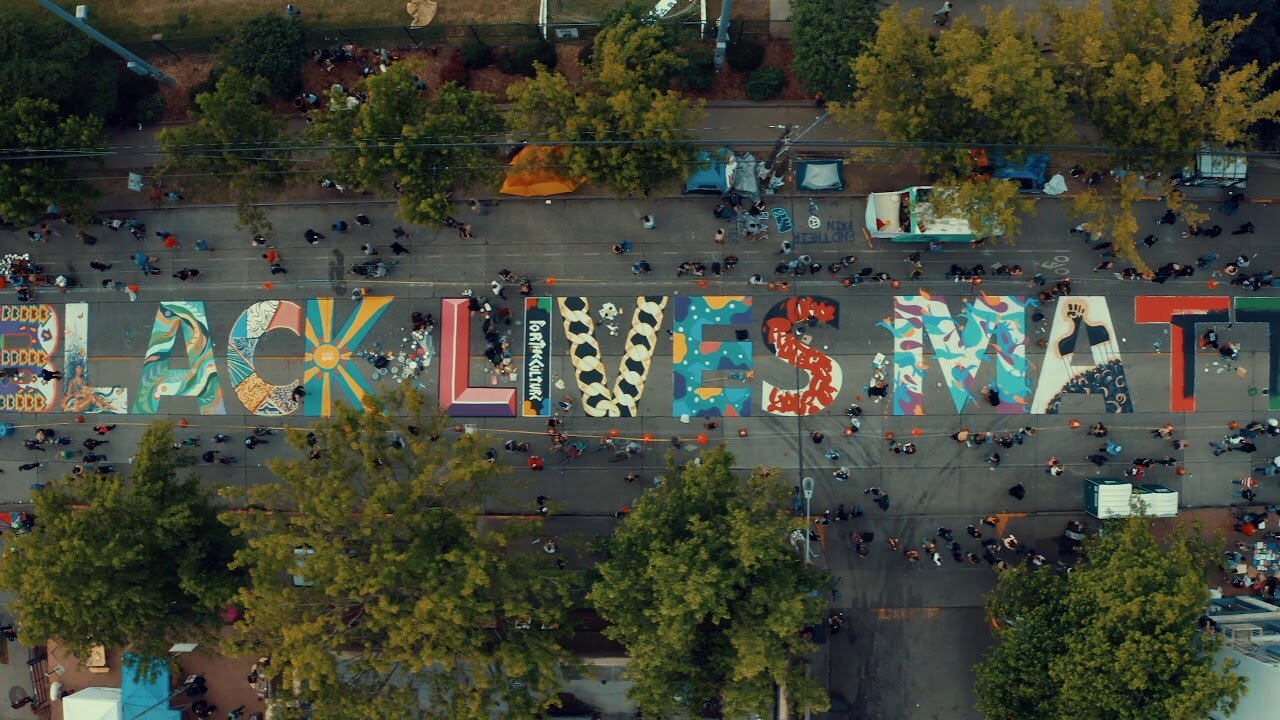From fringe idea to law of the land — a look inside the creativity fueling the struggle to defund the police
Beautiful Trouble examines the principles and theories guiding this growing insurrection in defense of Black lives. (Published by Waging Nonviolence)
By Nadine Bloch and Folabi Olagbaju
A mural in the Capitol Hill Autonomous Zone in Seattle. (Twitter/@kylekotajarvi)
“Defund the Police!” has moved from fringe idea to nearly law of the land so fast, pundits have motion sickness. It shows what can happen when progressive ideas are backed by true people power in a kind of “People’s Shock Doctrine.” (This phenomenon is an inversion of the “Shock Doctrine” that Naomi Klein observed, in which a traumatized population cedes control to corporate power in a moment of crisis.)
So how has all of this moved so quickly?
One answer lies in the massive scale of mobilization — protests in all 50 U.S. states, including many small, predominately-white rural communities, as well as many cities around the world. Black-led organizations and networks were already in place and ready to lead. Since the formation of Black Lives Matter, or BLM, in 2013, this female-led movement has continued to emphasize the development of young leaders and to innovate strategy and tactics. After its first national in-person action in Ferguson in 2014 following the killing of Michael Brown, the movement has honed its campaigning strategy using nonviolent direct action. It drew on the tradition of Black freedom movement and embraced the intersectionality of Black lives, while pushing for bold systemic changes to end racialized oppression.
Another factor is the sheer fierceness of the response — the willingness to take to the streets in spite of, or because of, quarantine. The creative, distributed, self-organized style of civic engagement, with protests happening organically, aligned in principles and demands across geographic distance has also played an important role. And all this activity has been aided and abetted by access to cell phones and social media — with hashtags like #BlackLivesMatter and #WeKeepUsSafe driving the growth and reach of organizing across both rural communities and international networks in record speed.
A less obvious piece of the answer is that these actions have been built — consciously or unconsciously — on a supercharged set of principles for making beautiful trouble. For those who are committed to continuing the struggle, and potentially escalating or innovating tactics to increase effectiveness, it can be helpful to take a deeper look at some of the principles and theories behind what is being done on the frontlines of this growing insurrection in defense of Black lives.

